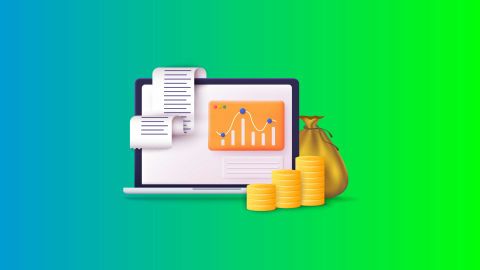If you’ve ever worried about what headlines like “the yield curve has inverted” really mean, you’re not alone. Many investors feel anxious when they hear about it, because it often gets linked to words like recession or slowdown. The truth is, the yield curve is simply a tool that shows the relationship between bond interest rates and the time for which money is lent. Think of it as a roadmap of how borrowing costs change over time.
In normal conditions, the curve slopes upward long-term bonds pay higher interest because investors want more reward for locking in money for many years. But when the curve flattens or turns upside down, it can spark fear. Why would short-term bonds suddenly offer higher returns than long-term ones? The answer lies in shifting investor expectations. An inverted yield curve signals that people are uncertain about the future and are seeking safety, even if it means settling for lower returns on long-term bonds.
Understanding this concept helps you cut through the panic. An inverted yield curve doesn’t guarantee a crisis, but it does highlight caution in the market. By knowing what it means, you can focus on adjusting your investments calmly instead of reacting to fear-driven headlines.
Knowing how the yield curve works is the first step, but building resilience in your finances requires action. Even small, regular investments can help you stay steady despite market shifts, ensuring your long-term goals remain on track. Start your SIP today with Rs. 100
What is an inverted yield curve?
An inverted yield curve is a financial situation where short-term bond interest rates are higher than those of long-term bonds. This flips the normal shape of the curve, which usually slopes upwards. An inverted curve is unusual and signals that something in the market is not following the expected trend.
It often occurs during times of economic stress. For example, when investors worry about a slowdown or recession, they move their money into long-term bonds. The higher demand pushes up bond prices and reduces their yields. At the same time, central banks may keep short-term rates high to control inflation or borrowing costs may rise. This creates the inversion.
While rare, an inverted yield curve is closely watched by investors and policymakers because it can act as a warning sign of possible economic challenges ahead. When unusual signals like an inverted curve appear, the best response is not fear but informed comparison. Looking at different fund options side by side can show you where opportunities still exist, even when the economy appears uncertain. Compare mutual fund plans instantly
Reasons for yield curve inversion
In a country like India, there can be multiple reasons why the yield curve turns upside down:
- Monetary policy: The Reserve Bank of India (RBI) plays a key role by setting the policy rate. If the RBI lowers its rate to boost growth, it can push up short-term activity and inflation while lowering expectations for the future. This may make long-term bonds more attractive, reducing their yields.
- Fiscal policy: Government borrowing also impacts the curve. If the government borrows heavily or faces high deficits, investors may demand higher yields on longer-term bonds as compensation for risk.
- Global factors: Events like global slowdowns, trade disputes, or geopolitical tensions can make investors nervous. In such times, many prefer to hold long-term Indian government bonds as a safe option.
- Supply and demand: Bond yields also respond to how much supply is in the market versus demand. More supply than demand at a certain maturity pushes yields higher, while stronger demand lowers yields.
Understanding these drivers matters because the same market forces shaping the yield curve also influence your investment options. By opening an account, you gain access to a wider range of funds designed to respond to different economic conditions. Open your mutual fund account today.
What is an inverted yield curve?
An inverted yield curve is a situation that often grabs headlines because it breaks the “normal” pattern of how bonds work. Usually, investors expect to earn more for lending money over longer periods. But when the yield curve inverts, this pattern flips — short-term bonds begin paying higher interest than long-term ones.
Why does this matter? Because it suggests that investors are uneasy about the future. They are willing to settle for lower returns on long-term bonds just to lock in safety. At the same time, short-term borrowing costs remain high, either due to central bank actions or immediate economic pressures.
This reversal is not common, and that’s why it draws attention. It can reflect slowing growth, tightening monetary policy, or a shift in sentiment where investors prefer caution over risk. While it does not guarantee a crisis, its history of preceding downturns makes it a key signal closely monitored across global markets.
Reasons for yield curve inversion
The reasons behind an inverted yield curve are not always the same. In India, several factors can contribute:
- Monetary policy
The Reserve Bank of India (RBI) sets the policy rate, which influences all other interest rates in the economy. If the RBI cuts rates to encourage borrowing and spending, expectations of lower future growth and inflation can take hold. In such times, investors may buy long-term bonds to lock in available yields, pushing their rates lower and flattening the curve. - Fiscal policy
When the government increases borrowing to meet budget deficits, investor confidence may be tested. Higher deficits can make markets cautious about long-term debt, leading them to demand higher yields for holding it. This shift can distort the usual slope of the curve. - Global factors
India does not operate in isolation. Events like a global slowdown, trade wars, pandemics, or geopolitical tensions can raise investor anxiety. During such uncertain times, global capital often flows into safer long-term assets, including Indian government bonds, changing their demand and yield structure. - Supply and demand
Bond yields also respond to basic supply and demand. If too many bonds are issued compared to demand, yields rise. Conversely, if demand outpaces supply, yields fall. At times, this imbalance can contribute to an inversion, especially when demand for long-term bonds surges.
What are the implications of inverted yield curve?
An inverted yield curve is not just a chart on paper — it affects real lives, businesses, and the economy. When short-term rates rise above long-term ones, the ripple effects are felt widely.
- For consumers: Borrowing becomes more expensive while savings bring lower returns. This means higher EMIs on loans but little benefit on deposits, reducing disposable income and limiting spending power. Families may hold back on large purchases such as homes, cars, or higher education.
- For investors: The opportunity to earn from equities or other high-return assets narrows. With bond yields offering limited rewards, investors may become cautious, shifting money into safer instruments, even at lower returns. This often reduces liquidity in the stock market.
- For businesses: Companies face higher costs of borrowing just as consumer demand begins to slow. Their profits shrink, expansion plans are postponed, and investment in new projects becomes less attractive.
- For the government: Public finances also come under strain. Servicing debt becomes costlier, which adds to the fiscal burden. This leaves less room for government spending on healthcare, infrastructure, and social programmes.
Should investors be worried when the yield curve inverts?
Hearing about an inverted yield curve can feel alarming, but it is important to separate fear from facts. History shows that while inverted curves have often been linked to recessions, they do not guarantee one. It is more of a signal of caution rather than an immediate red flag.
For individual investors, the key is not to panic. Instead, it is about staying observant. Ask yourself: How long does the inversion last? What economic policies are driving it? Are global factors influencing the shift?
A smart approach is to diversify your portfolio. By balancing across equities, fixed income, and other assets, you can manage risks without having to second-guess every market signal. Adjusting your investments to match your goals and timelines ensures that you remain steady, even if the market appears uncertain.
What does an inverted yield curve suggest?
At its core, an inverted yield curve reflects shifting market sentiment. Investors are essentially saying, “We expect slower growth ahead, and we value safety over high returns.” They show this by locking their money into long-term bonds, even at lower yields.
Historically, this pattern has often been linked to economic slowdowns. Businesses may respond by cutting back on spending, while consumers save rather than spend. Together, this weakens overall economic activity.
That said, the yield curve is not destiny. It is a warning light on the dashboard, not the crash itself. Policymakers and investors monitor it closely because of its predictive history, but it should be seen as one of many indicators. It suggests caution, not panic, and underlines the importance of being prepared for possible economic shifts. The bigger lesson here is about staying alert without overreacting. Comparing different mutual fund options can help you identify where to position your money wisely, so that market caution turns into opportunity instead of risk. Compare different mutual fund choices
The relationship between instrument price and their yield
One of the most important things for investors to understand is how the price of a bond or instrument relates to its yield. The two always move in opposite directions. When yields rise, prices fall. When yields drop, prices rise.
This happens because the fixed coupon or interest that a bond pays becomes more or less attractive depending on the prevailing interest rates. If new bonds are issued with higher returns, older ones with lower coupons lose value, pushing their prices down. Similarly, if rates fall, older bonds paying higher interest become more valuable, raising their prices.
Recognising this inverse relationship is essential for investors, especially during periods of yield curve shifts, because it directly affects the value of fixed-income investments.
Inverted yield curve impact on fixed-income investors
An inverted yield curve reshapes how fixed-income investors think about risk and reward. Usually, long-term bonds pay higher interest to compensate for the uncertainty of holding them for many years. But when the curve inverts, that premium disappears. Short-term bonds start offering similar or even better returns than long-term ones.
In India, this often makes government-backed securities more attractive. They are considered risk-free and may end up yielding almost as much as corporate bonds or other higher-risk assets. When this happens, many investors prefer the safer option.
This environment also increases interest in shorter-term instruments like certificates of deposit or money market funds. For investors seeking stability, these products may suddenly look more rewarding than locking funds into long-term bonds.
Historical examples of inverted yield curves
Looking at history shows why investors pay close attention to inverted yield curves. They have often preceded periods of economic slowdown.
For instance, the inversion in 2006 was followed by the 2008 global financial crisis, one of the most severe economic downturns in recent memory. More recently, the yield curve inversion in 2019 signalled concerns ahead of the global shock caused by the COVID-19 pandemic.
Although not every inversion leads directly to a crisis, these episodes highlight why markets, governments, and central banks monitor the curve so closely. It is a signal that cannot be ignored, even if the outcome is not always immediate.
How consumers can be affected by inverted yield curves
An inverted yield curve can affect consumers in ways that touch daily life. When borrowing costs rise while savings rates remain unattractive, households feel squeezed. Loans for housing, vehicles, or education become more expensive, while savings accounts and deposits bring limited returns.
During a slowdown linked to an inverted curve, banks may also tighten credit, making it harder for families to borrow. This combination often leads consumers to cut back on spending, which further weakens overall economic activity.
How equities can be affected by inverted yield curves
Equity markets are usually sensitive to economic signals, and an inverted yield curve is one such signal. When the curve flips, it often reflects weaker growth expectations. Investors may respond by shifting money from equities into bonds, which are viewed as safer during uncertain times.
This movement reduces demand for stocks, causing equity prices to fall. As companies face lower consumer demand and rising borrowing costs, their profits can shrink, further dampening stock market performance.
How fixed income can be affected by inverted yield curves
For fixed-income investors, an inverted yield curve changes the reward structure. In times of recession or economic uncertainty, bonds often become more attractive because they are viewed as safe havens. As investors move their money from equities into bonds, demand rises, which pushes up bond prices and lowers their yields.
This shift can make fixed-income investments perform well, even while other parts of the market struggle. It reinforces the role of bonds as a stabilising element in diversified portfolios.
Key takeaways
- The yield curve shows the link between bond maturities and interest rates. Normally, long-term bonds pay higher interest, reflecting greater risk over time.
- An inverted yield curve happens when short-term bonds yield more than long-term ones. This reversal often signals market caution and the possibility of slower growth or recession.
- In India, monetary and fiscal policies, global economic pressures, and supply-demand imbalances in the bond market are common reasons for such inversions.
- While it is not a certain predictor of recession, an inversion should be watched carefully. Investors need to track how long it lasts and what factors are driving it.
- Spreading investments across different asset classes and adjusting risk levels according to financial goals is a practical way to stay prepared.
Conclusion
An inverted yield curve can be unsettling, but it does not mean investors should abandon their long-term plans. Economic downturns, while challenging, are often temporary. Overreacting by pulling out of investments can sometimes create more harm than good.
The wiser approach is to stay focused on financial objectives and continue following a disciplined plan. Regularly reviewing asset allocation helps ensure that your portfolio stays balanced, especially during volatile periods. Rebalancing when necessary keeps your investments aligned with long-term goals. The real strength of an investment plan lies in consistency. Even when markets send mixed signals, continuing to explore well-performing funds allows you to adapt without derailing your journey. Stability often comes from choosing the right products at the right time. Check today’s top-performing mutual funds.




